History
Steady Rise Accelerates The Early Years (1905-1937)
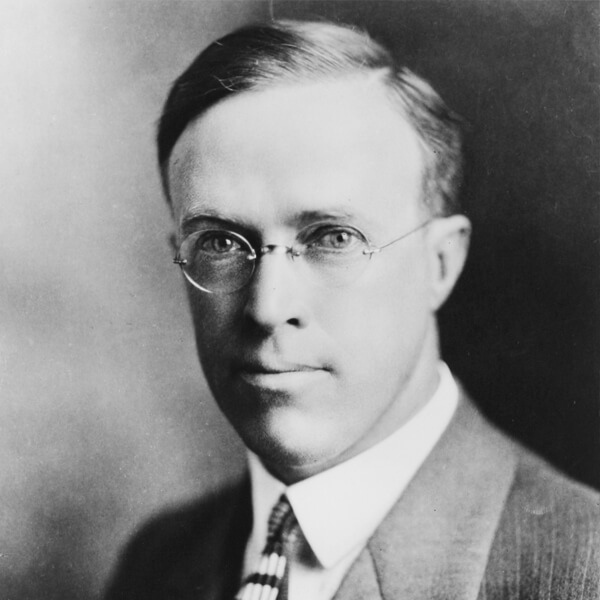
Philip S. Biegler
First USC Dean of Engineering
The school has come a long way since the first classes in engineering disciplines were offered in 1905.
Those early classes were offered by the College of Liberal Arts through its first engineering departments: civil engineering, mechanical engineering and electrical engineering.
The first engineering professor, John B. Johnson, was hired in 1908, the same year that the college awarded its first degree, a B.S. in civil engineering, to one Omar R. Turney. The first USC electrical engineer graduated in 1911. USC awarded its first mechanical engineering degree and its first master’s, in chemical engineering, in 1921. By 1927, USC had awarded 254 engineering degrees, mostly B.S. degrees in civil and electrical engineering.
What is now the Widney Alumni House served as the home of civil engineering at USC in 1912. The following year year, 1928, was a milestone in another respect. Two decades after USC offered its first engineering course, a separate College of Engineering was established, with five departments: chemical, civil, electrical, mechanical and petroleum engineering.
Professor Philip S. Biegler, chair of the electrical engineering department, was the first USC dean of engineering. Under Biegler’s leadership, the new College of Engineering moved from a temporary structure put up in World War I and called the “Red Barn” to headquarters in Bridge Hall; meanwhile a foundation was laid for further growth, including the recruitment of a number of excellent teachers and expansion into the new Petroleum and Chemical Engineering Building. Still, when USC alumnus Robert E. Vivian first arrived in 1937 to teach chemical engineering, the master’s was the highest degree awarded, and Engineering’s physical resources remained unimpressive.
“The electrical engineering department was still in the same basement laboratory … where I had taken courses in 1917-18,” Vivian wrote in his memoir, The USC Engineering Story, “and as far as I could tell, the equipment was the same as I had used then…. It is safe to say that all the equipment of the College of Engineering, including the few surveying transits and levels and drafting tables, could have been purchased for $10,000.”
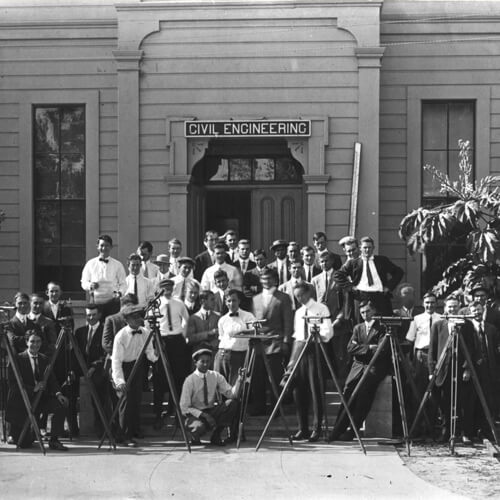
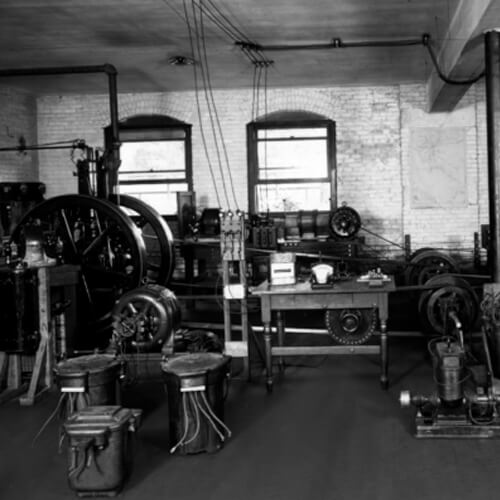
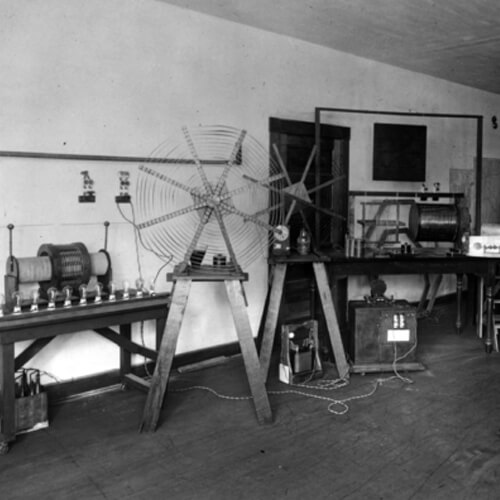
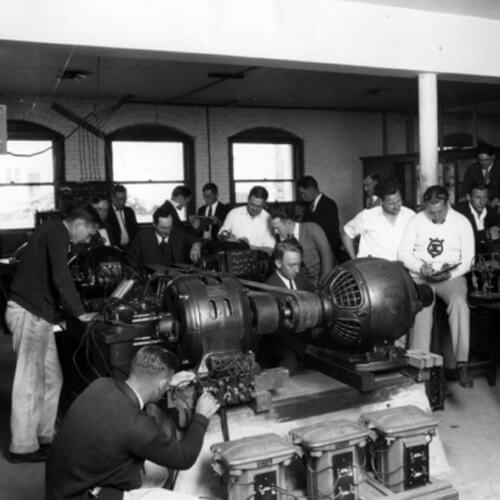
Decades of Growth
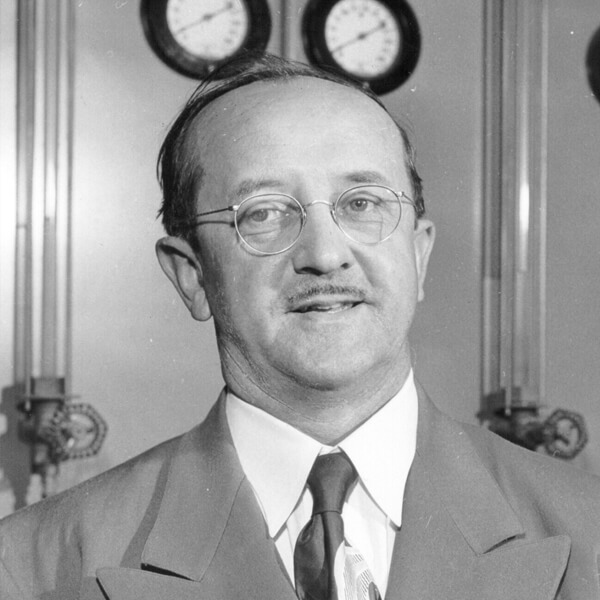
Robert E. Vivian
Progress continued. USC’s first Ph.D. in engineering was awarded in 1939 to a chemical engineering student of Vivian’s. The college completed its first building, the 28,000-square-foot Engineering Building (now Biegler Hall). The building cost $86,000, an extraordinary bargain even for 1940, made possible because a USC Engineering tradition – close ties with industry – was active even then. A member of the school’s Engineering Advisory Council, a contractor and close friend of a USC alumnus, had agreed to build it at cost.
In 1940, Vivian became acting dean – an appointment that was made permanent in 1942 – and presided over nearly two decades of solid growth, starting an upward curve that is still accelerating. When Vivian took office, USC Engineering was devoted almost exclusively to teaching: “You should leave the research to Caltech,” a trustee bluntly told Vivian at one point. World War II changed that.
At first, the school’s growth remained in teaching: almost immediately after Pearl Harbor, USC Engineering became a major center for the Engineering Science and Management War Training Program, to fill the burgeoning need for technically trained management and supervisory personnel for war industry. Some 50,000 students swarmed through the program, the largest single-campus effort of its kind in the country.
After the war, the college’s proficiency and efficiency in teaching advanced-level engineering led to another notable industrial collaboration that continues to this day. Hughes Aircraft Co. contracted with USC to offer master’s-level instruction to its engineers, under what was called the Cooperative Engineering Program. Hughes employees received tuition, books and flexible work hours, enabling them to get advanced degrees.
The activity that would become a prime driver of Engineering’s expansion in the ’50s and ’60s – defense research – began in the war years. The first research contract, in 1944, was for $10,000 from Lockheed Aircraft for studies of spot-welding aluminum alloy. Continued defense spending on high-technology, plus a flood of veterans using GI Bill benefits to build careers in engineering, served to transform the school into a major center for the development of new engineering science and technology.
By 1948, the College of Engineering had 100 graduate students. A decade later, the count had quadrupled to 400 in what was renamed the “School of Engineering” in 1950. For USC’s Diamond Jubilee 75th anniversary celebration in 1955, Vivian was able to boast that the school had “graduated 5,000 engineers, 4,200 since 1940. They work for more than 600 companies. Ninety-four are presidents, vice presidents or chief engineers of companies in this country.”
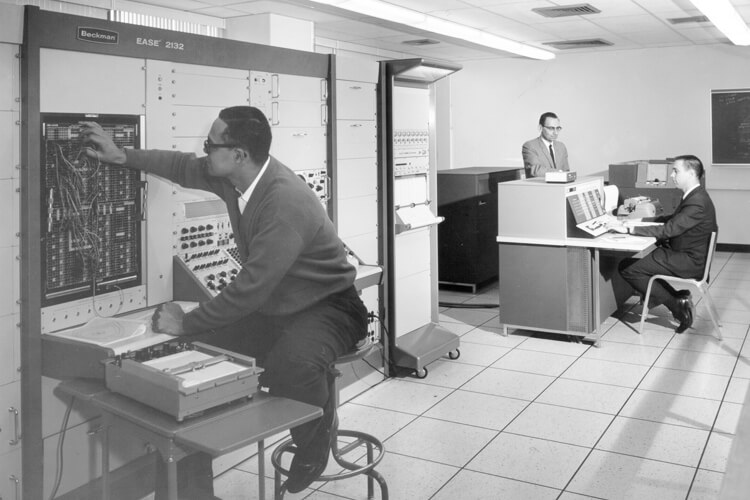
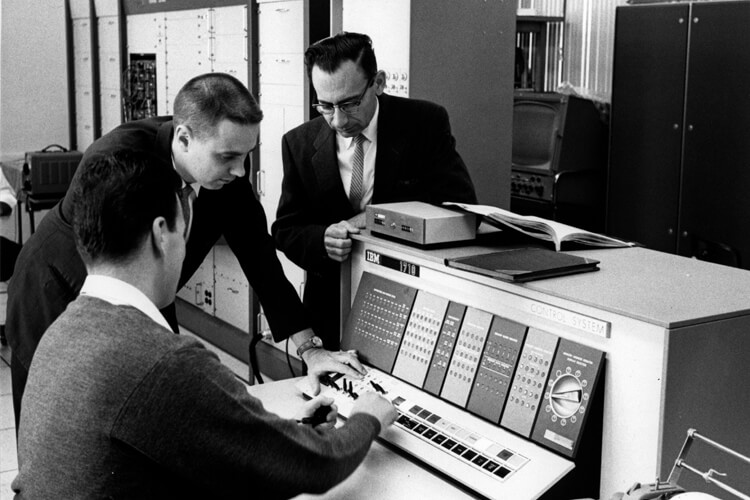
The Kaprielian Era
Vivian retired in 1958, one year after USC’s first computer – the gift of an alumnus – had been installed in Biegler Hall. Also that year, Zohrab Kaprielian joined the engineering faculty. While Alfred C. Ingersoll became dean in 1960, it was Kaprielian who, over the next decade, transformed the school into a major research institution.
Kaprielian had an uncanny ability to communicate his vision to others. Between 1958 and 1963, though remaining a professor, he behaved as a department chair and succeeded in recruiting a number of researchers from Bell Laboratories and other strong research institutions. George A. Bekey, who was recruited in 1962 to start programs in computers, controls and biomedical engineering, recalls how Kaprielian interviewed him. “He was not the chair of the electrical engineering department, but he was clearly in charge. What I recall most was his vision of the future of the school, his vehemence and his commitment to its future.”
Perhaps Kaprielian’s greatest moment came after he became chair of electrical engineering. During this period in the 1960s he convinced the Defense Department to award USC one of the coveted Joint Services Electronics Programs. The catch was that he did not have sufficient faculty to do the work. He took the possibility of this award to President Norman Topping and obtained authorization for 10 new faculty positions.
By 1965, the graduate school of engineering had grown to one of the largest in the country, with more than 2,000 students, including many from abroad. It ranked only behind MIT in numbers of M.S. degrees awarded – many of them attributable to the Hughes outreach degree program, still going strong.
In 1968, electrical engineering professor Jack Munushian expanded this successful industrial outreach to a new medium for instruction: television. “Distance education” by television was a dream realized under Kaprielian; by broadcasting lectures via closed-circuit television into the corporate offices of Hughes and other companies, it became easier than ever to complete class work. Students at the remote sites could even ask questions, thanks to an innovative two-way hookup. The Instructional Television Network (ITV), decades ahead of its time, continues today.
In the same period, the school added departments and began to attract – and retain – faculty of great distinction. Between 1960 and 1970, 12 young faculty who eventually were admitted to membership in the National Academy of Engineering joined the school: communications specialists Solomon W. Golomb (1963), Irving S. Reed (1963), Lloyd Welch (1965), Robert Scholtz (1965) and William Lindsey (1968); aeronautics experts John Laufer (1964), Hsien Cheng (1964), Tony Maxworthy (1967) and E. Philip Muntz (1969); laser specialist Robert Hellwarth (1970, also a member of the National Academy of Sciences); biomathematician Richard Bellman (1965); roboticist George Bekey (1962); and electrical engineer Leonard M. Silverman (1968), the future dean of the school. Meanwhile, new departments were introduced: aerospace engineering (1964), industrial and systems engineering (1965) and materials science (1965).
By the time Ingersoll retired in 1970, USC Engineering had made major improvements in both quality and quantity. The formal, and inevitable, appointment of Kaprielian as his successor ushered in a time of re- organization and consolidation. Kaprielian also rose to be senior vice president and provost at almost the same time. University Professor Golomb, whom Kaprielian brought to USC, recalls that at one point around 1970, there were five levels of administration between himself and the president of the university – “and all of them were Zohrab Kaprielian. We operated on the principle of one man, one vote,” Golomb said, “and Kaprielian was the one man who had the one vote.”
Kaprielian built departments by consciously targeting areas where other nearby universities were weak – a strategy that had particular success in electrical engineering, where USC developed great strength in the emerging disciplines of solid-state electronics, communications, signal processing, controls and computer engineering.
Upon becoming dean, Kaprielian in 1971-72 reorganized what had been the single department of electrical engineering into the separate departments of computer science, biomedical engineering, and two distinct departments of electrical engineering: EE-electrophysics and EE-systems.
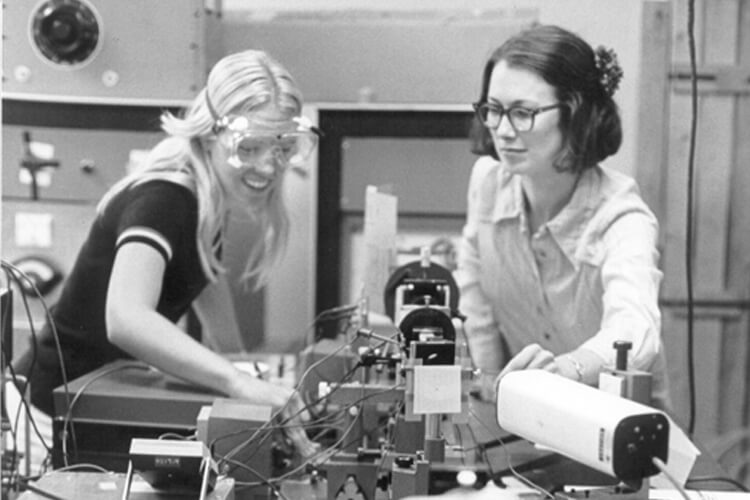
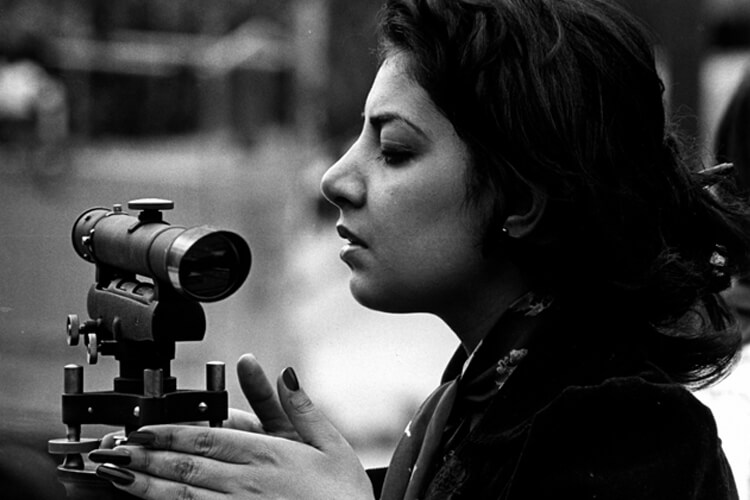
The Arrival of ISI
Meanwhile, the reach and scope of engineering research was being immensely broadened.
Exhibit A was the addition of the Information Sciences Institute (ISI). While working for the Rand Corp. in Santa Monica, computer scientist Keith Uncapher devised and sold to the Defense Advance Research Projects Agency an ambitious plan for a large, sophisticated research agency to work directly with the Department of Defense in developing short-term solutions to specific military needs. “Vietnam was winding down,” Uncapher recalls, but the legacy of the war had made defense work unwelcome at some academic departments. “ISI was designed as a bridge between the Department of Defense and academia.”
Kaprielian moved with his customary decisiveness to bring ISI to USC, though not to campus: the Marina del Rey location was dictated by the need for far more space than University Park had available.
With his three co-founders, Uncapher had almost immediate success in turning ISI into a national center for computer studies, attracting many of the most creative minds working in computer science. It was one of the birthplaces of the Internet, owing to the work of researchers like Jon Postel, Paul Mockapetris and others. A major center of Defense Department investment, ISI continued to grow throughout the 1970s and 1980s, and remains a key institution in its discipline into the 1990s – with such tasks as its current five-year, $21 million research effort to upgrade the Internet.
Meanwhile, the School of Engineering’s growth in size and sophistication in turn led to a bumper crop of distinguished alumni, including astronaut Neil Armstrong, Gen. Norman Schwarzkopf and Apple Computer co-founder A.C. Markkula. Numerous executives of major U.S. and foreign technology companies – such as Andrew J. Viterbi, co-founder and chief technology officer for Qualcomm Inc. in San Diego, and Lily Chiang of Hong Kong-based Chen Hsong Holding Co., a multinational producer of specialized machinery – are also alumni.
New Leadership
Dean of Engineering Leonard M. Silverman at the future site of the School of Engineering’s future Engineering Academic Center, an 84,000-square-foot facility in the planning stages. The center will upgrade facilities for undergraduate education, accommodating multimedia classrooms as well as facilities for student services and student organizations.
Following Kaprielian’s untimely death from a heart attack in 1981, associate dean Melvin Gersteinwas appointed interim dean while a major nationwide search for a new dean was underway. Ultimately, the search converged on an internal candidate: Leonard M. Silverman, then chairman of the EE-systems department, was appointed to lead the school in 1984.
“Dean Silverman’s great strength has been his ability to provide strategic directions for the school, and then move decisively to implement them,” said a fellow electrical engineer, USC President Steven B. Sample.
One of these strategic directions was a renewed emphasis on interdisciplinary research, long a hallmark of USC. Among the new units created have been the Institute for Robotics and Intelligent Systems, the Center for Neural Engineering (bringing engineering expertise to bear on the problem of brain function), the Center for Advanced Transportation Technologies and the Center for Software Engineering.
Early in his tenure as dean, Silverman recognized the critical importance of the emerging field of photonic technology and convinced the Keck and Powell foundations to fund a facility for fabricating solid-state devices – a 6,000-square-foot state-of-the-art clean room. This led to a major step forward – the location at USC of the National Center for Integrated Photonic Technology, under the leadership of P. Daniel Dapkus.
In the last 10 years, the school has also renewed its focus on undergraduate education and began attracting some of the best undergraduates in the university.
The emphasis on undergraduate education has led to the planning for Ronald Tutor Hall, which in addition to providing state-of-the-art multimedia classrooms, will also provide a “home” for engineering undergraduates. All student services and student organizations will be housed in this ambitious project.
“This building will fuel our momentum,”Silverman said, “giving us the thrust we need to consolidate our gains and take the school to the next level.”
A Fresh Surge Forward
C. L. Max Nikias succeeded Silverman as dean in 2001. Nikias, a professor of electrical engineering at USC, had already achieved prominence for his vision and leadership as the founding director of the school’s Integrated Media Systems Center (IMSC), the only NSF Engineering Research Center for multimedia and Internet technologies. IMSC, awarded to USC in 1996 after an intense national competition, was widely seen as a major coup for USC.
The school quickly felt a fresh surge of energy. Following a period of decline in the number of engineering faculty at USC, Nikias added 30 new faculty members in his first three years.
In 2003, USC finished first in a competition with 78 other schools to win its second prestigious NSF Engineering Research Center (ERC). The mission of the Biomimetic MicroElectronic Systems (BMES) center, jointly with USC’s Keck School of Medicine, is to develop microdevices capable of communicating with living tissue to replace damaged parts of the human body. Later that year the Department of Homeland Security awarded USC its first university center of excellence. The Center for Risk and Economic Analysis of Terrorism Events (CREATE) includes researchers from the USC Viterbi School of Engineering, USC’s School of Policy, Planning and Development and several other universities.
In 2004, Andrew and Erna Viterbi made the largest ever naming gift to an American engineering school — $52 million — to name the USC Andrew and Erna Viterbi School of Engineering. The legacy that accompanied the name ˆ Andrew Viterbi, a USC graduate, is one of the most brilliant engineers of our age ˆ is seen as invaluable.
Later that year, USC Engineering rose to its highest rank ever ˆ #6 ˆ in the closely watched U. S. News & World Report rankings of the best graduate programs in engineering.
Yannis C. Yortsos, who had previously served the School with distinction as a department chair, senior associate dean for academics, and as dean for an interim period, was named the Viterbi School’s new dean, effective June 1, 2006.
100 Years of Engineering
The academic year of 2005-2006 marked the centennial anniversary of the first engineering courses offered at USC. The USC Viterbi School of Engineering celebrated the excitement, discovery and innovation in a century of USC engineering, as well as looked forward to an extraordinarily promising future (check the Celebrating 100 years video). The Viterbi School’s departments organized a series of centennial lectures to celebrate the anniversary. Speakers included two university presidents, an astronaut and a host of other highly distinguished academics.
Present Day: From “No Distance Learning” to the Dawning of the Quantum Era
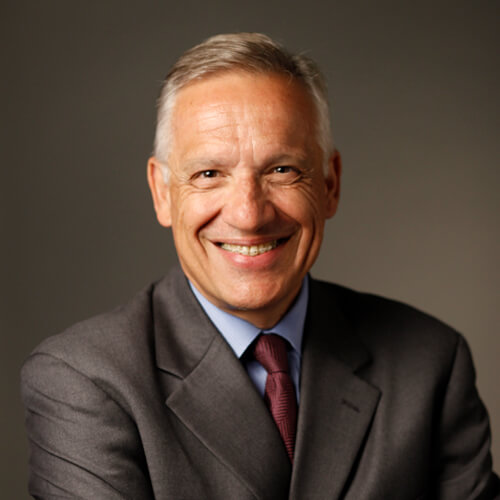
Yannis C. Yortsos
Dean of Engineering
Yannis C. Yortsos, was named the Viterbi School’s new dean, effective June 1, 2006. Two years later, in 2008, Yortsos was elected to the National Academy of Engineering (NAE), the highest professional distinction that can be accorded to an engineer. With his leadership, the USC Viterbi School keeps thriving as one of the top engineering schools in the U.S. and the world.
In 2009, the U.S. Department of Energy has designated USC as the site of an Energy Frontier Research Center for emerging materials for solar energy conversion and solid state lighting. Later that year, a “classroom without borders” was first envisioned in dialogue between the Viterbi School and the Peking University (PKU) College of Engineering. In three years, the program, “iPodia”, has evolved to create a virtual classroom that allows students from around the globe to collaborate and learn together. As of 2013, the eight member schools of the iPodia Alliance included: USC, Peking University, National Taiwan University, Technion, the Korea Advanced Institute of Science and Technology, RWTH Aachen University in Germany, University of São Paulo and the Indian Institute of Technology – Bombay.
In 2010, USC trustee and alumnus Ming Hsieh donated $50 million for an Institute for Research on Engineering-Medicine for Cancer, to accelerate the pace of getting the new medicines from the lab to the cancer patients. Meanwhile, recognizing innovation and entrepreneurship, USC Viterbi School has organized the Maseeh Entrepreneurship Prize Competition (MEPC) with the support of entrepreneur Fariborz Maseeh. The competition seeks to empower society through engineering, via a yearly business plan competition to help inspire USC Viterbi innovators to be at the forefront of the NAE Grand Challenges.
In the fall of 2011, the USC Viterbi School of Engineering and the Keck School of Medicine of USC launched the HTE@USC program (Health, Technology and Engineering at USC). Among the first of its kind in the nation, HTE@USC jointly trains medical students in a technology-bent curriculum and engineering Ph.D. students with clinical immersion and understanding.
Entering 2012, USC’s Information Sciences Institute marked its 40th anniversary. Founded in 1972, ISI has played a pivotal role in numerous technological advances – including major contributions to conceiving, designing and implementing the Internet. In just the previous year, 2011, ISI continued that grand tradition of pathbreaking research, ushering in the world’s first academic quantum computing center, the USC Lockheed Martin Quantum Computing Center.
Under Dean Yortsos, the intersection of engineering and the arts continues to be very fertile ground. The USC Games program, a joint initiative of USC Viterbi’s Department of Computer Science and USC School of Cinematic Arts’ Interactive Media Division, has been named the No.1 graduate program in North America four years in a row.
Since 2006, 12 USC Viterbi faculty, of which 8 are women, have been recognized as top global innovators under the age of 35 by MIT’s Technology Review. The innovators span the fields of energy, biotechnology, nanotechnology, the Web, computer and electronics hardware and software, and other emerging disciplines.
Published on October 21st, 2016
Last updated on March 20th, 2020







